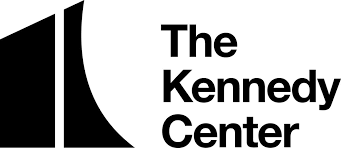REGISTER ONLINE BY DECEMBER 15, 2023!
See below for further information.
Regional Design Projects are intended to serve Region III student designers with the opportunity to showcase their work for non-realized design projects, and to receive
There are two entry divisions, Undergraduate and Graduate. All entrants must be currently enrolled students of colleges and universities in Region III at the time of the festival.
Categories of entry include Scene Design, Costume Design, Lighting Design, Makeup Design
All entries must be original designs conceived and rendered by the entrant for one of the allowed plays.
- Plays for Regional Projects & Design Storm for the 2025 Festival
- Plays for Regional Projects & Design Storm for the 2026 Festival
Coming soon!
How to Participate
To take part in the Regional Design Project, students need only complete an online registration form. If entering more than one category, a separate form must be submitted for each entry. There is no entry fee.
Student designers are asked to prepare a display showing their design, and present it to a team of respondents at the Region III Festival. All designers will receive feedback in both an oral response session with a panel of design respondents and written response from regional faculty respondents.
Regional Design
Projects Application
Please visit https://www.kcactf3.org/dtm-exhibit-format/ for information regarding presentation format.
Preparing the Design and Display
Please read the Region III Exhibit Format Recommendations for a description of the display panel you will be given and for some suggestions on how to plan your display.
In order to help the respondents understand your design process and intentions, it is important that designers in all categories present supporting materials, which most clearly tell of the story of the process and evolution of the design.
Supporting materials that have proven most useful include combinations of the following:
Six to twelve representative renderings or color plates with costume fabric swatches attached; a color chart or color board to give an overview of the designer’s approach to the play as a whole; presentation of the design that incorporates color, texture, value, and scale in the form of research, renderings, sketches, photography or a combination thereof.
Drafted light plot, section, cue list and magic sheet; visual presentation of a significant moment in the play showing how the design uses the variable properties (color key, light sketches, storyboards, etc.); support materials such as research or visual representation from other media (paintings, photographs, collage, etc.), which might help clarify the design idea. Type of space, setting or other restrictions are at the discretion of the student
Renderings of each character; separate makeup character worksheets with the colors listed for each area (i.e. base, cheeks, eye shadow, lips, hair color, etc.); research or visual representation from other media (paintings, photographs, collage, etc.) that might help clarify the design idea.gs.
Research and sources of inspiration that demonstrate the designer’s process and evolution; paperwork (such as sound plot, board hook-up, speaker placement, etc.) illustrating how the design should be implemented; explanation of five or six cues created for the play. In addition to their poster, a 5.1 Q-lab system with a large 1080p display will be provided. Students will each be scheduled 15 minutes of tech time to test their Q-lab presentation. Students should make a Q-Lab with their sounds and 1080 x 1920 images/slides to provide context for each cue. The presentation should run from 1-3 minutes of length. This will not be shared with the respondents during your presentation. Instead, during your presentation you need to provide two to four specific cues you can ask a provided board op to play. Respondents will have access to your full Q-Lab presentation. With such limited tech time students will only be successful if they come with a well programmed Q-Lab project that they are simply testing on the display system. Students with questions should contact the Regional DTM Chair.
Research and sources of inspiration that demonstrate the designer’s process and evolution; paperwork (such as projection plot, control network diagram) illustrating how the design should be implemented; five or six cues created for the play. In addition to the poster, a Q-lab system with a large 1080p display will be provided. Students will each be scheduled 15min of tech time to test their Q-lab presentation. Students should make a Q-Lab with their visuals. The presentation should run no more than 3 minutes of length. This will not be shared with the respondents during your presentation. Instead, during your presentation you need to provide two to four specific cues you can ask a provided board op to play. Respondents, will have access to your full Q-Lab presentation. With such limited tech time students will only be successful if they come with a well programmed Q-Lab project that they are simply testing on the display system. Students with questions should contact one of the Regional DTM Chairs.
